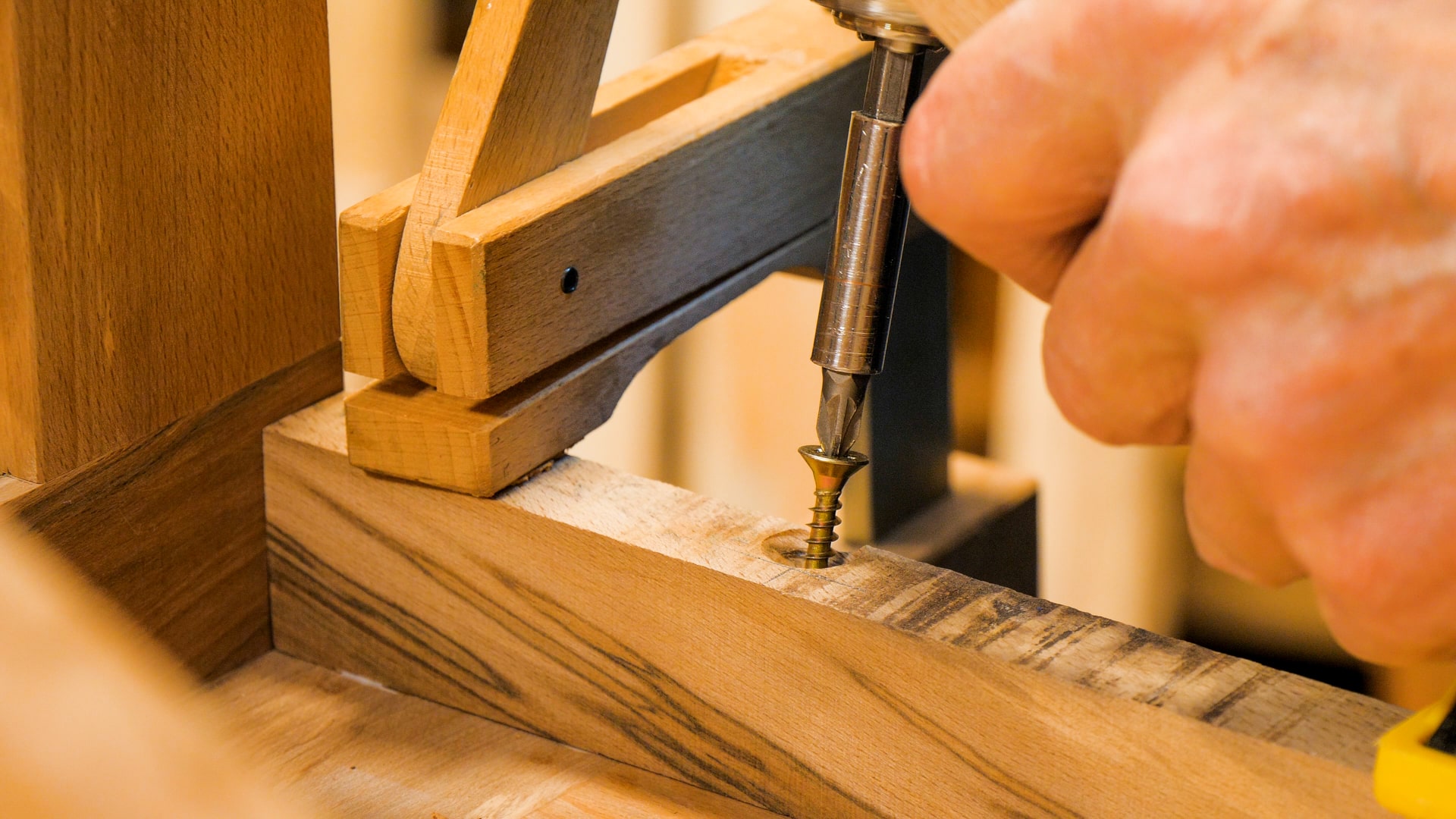Sellers Home Corner Desk: Episode 7
Posted 21 February 2024
This is an episode in a paid series. Want to watch it? You just need to sign up as a paid member, and you can enjoy this video and many other videos we think you will love.
The three-dimensional jigsaw puzzle comes together in this episode, as Paul fixes the desk together and then carefully dismantles the joints and transports it into the house. We’ll also see him take great care to finish the piece, so that the final outcome really sparkles. We hope you have enjoyed this series as much as we have.


I understand Paul not wanting to name particular brands of finish. But could I ask in general terms what type of finish was used? Was it what gets called a hard wax oil?
Paul mentioned that the dome head screws he used weren’t ment to be used with a drill driver. How does he know that? How do we know, when buying such kind of screws, if they can be used with a drill driver?
Also, how did he know that his walls were 90 degrees, where the table was placed? How did he measure that, with a big square…?
Thanks and congrats for another great project!
I asked Paul and his answer is below:
Slot head screws were never designed for mass production drill driver driven screws. They were designed for turn screws or screwdrivers. That doesn’t mean that nobody installed a flat head screw driver bit into a drill driver just that it was never the original intent. On the other hand all hex head torx square head torx were all designed to be power driven.
I just took a big square and held it to the wall. Alternatively if you don’t have a big square take a measurement at the corner where the two walls meet and mark 4 ft along. The other wall mark 3 ft. Stretch a tape between the two points diagonally if it measures 5ft then the corner is square. This is called the 3-4-5 method. This will work with any increments you choose.
3-4-5 Pythagoras theorem.
can be used on long distance (e.g. on a lawn) with a string.
Measuring the angle also assuming that the wall are flat.
If not, one could put a chair rail on the wall just above the desk.
Just love it, superb job as always.
Hi Paul,
Could you please explain why you didn’t use turn-buttons that you usuallly do? Is this for asthetic reasons?
You did mention that you used very dry wood but would this way of using screws work for most scenarios and wood types we use?
Thanks,
Laxmi
And would shellac be a good choice here too? I have never worked before with walnut but I hope shellac works great with Walnut as well.
I asked Paul and he said:
It would have worked to use turn-buttons. I am just trying to show lots of different methods in my furniture.
I believe I recognize the can. It is Osmo Polyx.
Just wondering about width of boards for gluing up the table top or any table top for that matter. I have some beautifully figured red oak 10 inches wide for this project. Something tells me don’t glue up a few 10 inch wide pieces for the top. In Paul’s projects that I have looked at the boards are not this wide. Is there a give or take standard width? I am thinking warping may be a problem with wider boards.
I asked Paul and he said he usually wouldn’t go wider than 6″.
Thank you.